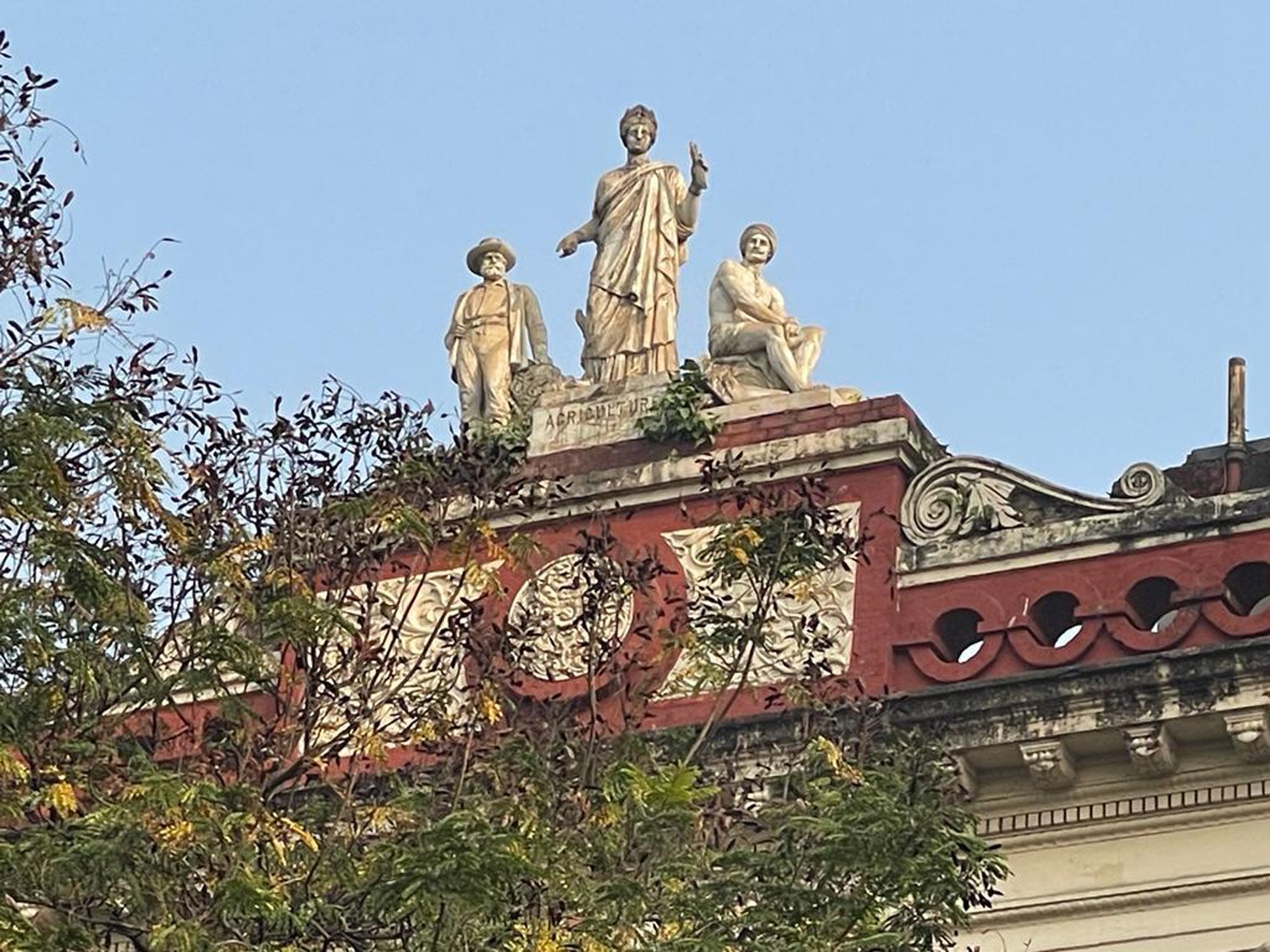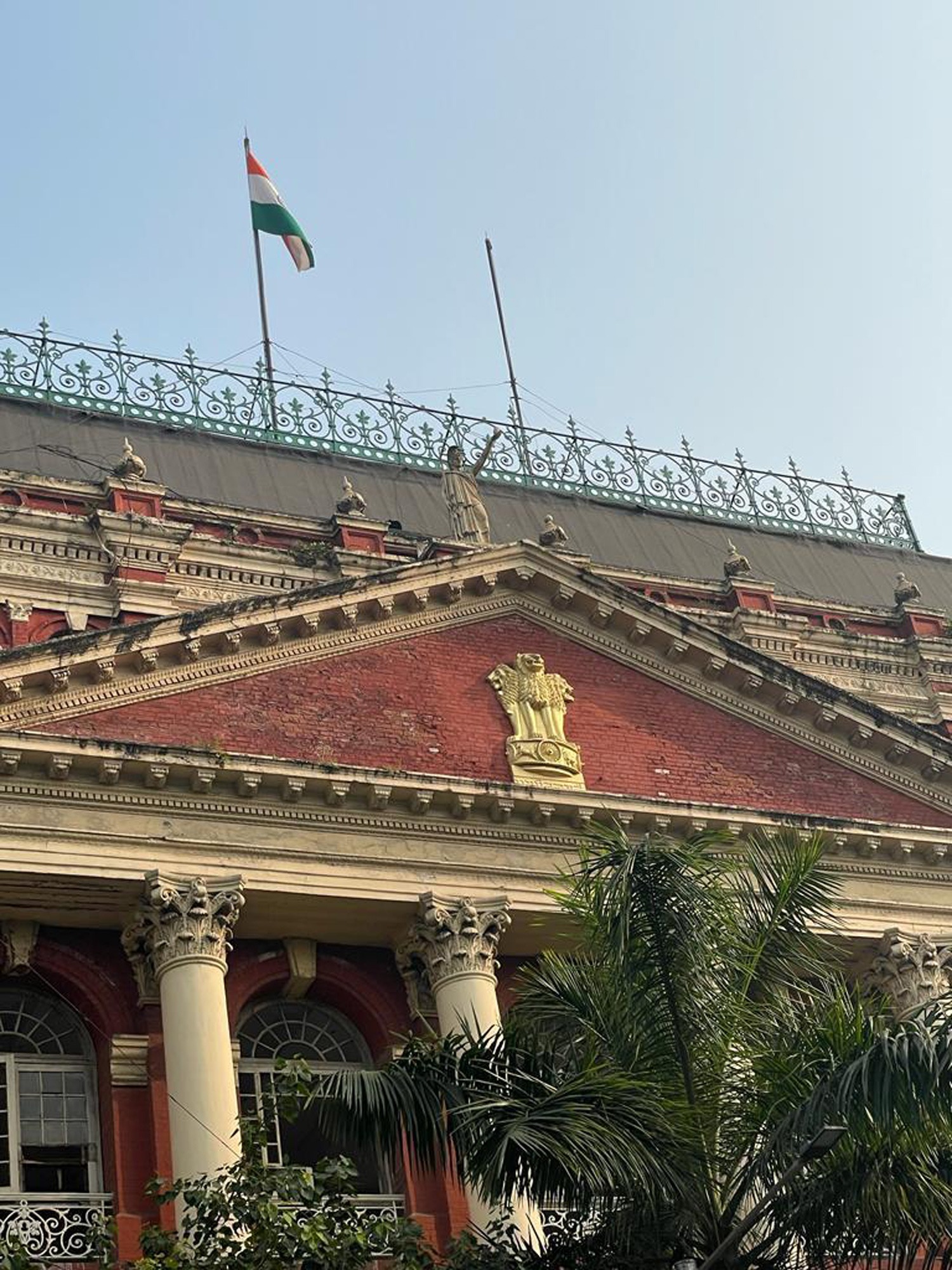27 Nov Kolkata’s Heritage Writers’ Building
The Writer’s Building, situated in the heart of Kolkata, stands as a testament to our city’s rich colonial history.
Built in 1777 during the British East India Company’s rule, this structure has undergone several transformations reflecting the changing political landscape of the region, and has shown it’s resilience as it reigned through time.
Initially built for the Writers (junior clerks) of the East India Company
Originally, it was built as the intended office for Writers of the British East India Company, who were the clerks responsible for documenting trade transactions. In time, the building evolved into the Secretariat under British colonial rule
 Clusters of statues adorn the terrace : “Justice”, “Commerce”, “Science” and “Architecture”
Clusters of statues adorn the terrace : “Justice”, “Commerce”, “Science” and “Architecture”
Writers’ Building’s architecture blends various styles including the Indo-Gothic and the classical, showcasing the cultural amalgamation that defines Kolkata. The statues adorning the roof of the structure add a distinctive and regal touch to its architectural grandeur. These statues, depicting mythological or historical figures, contribute to the building’s cultural richness. Gazing up at the roof we could spot these statues serving as silent guardians of the historical narratives encapsulated within the Building. These sculptures not only enhance the visual appeal of the facade but also provide glimpses into the stories and values significant to the eras they represent.
A building that has shaped the history of the region
The Writer’s Building has witnessed pivotal moments in India’s struggle for independence. It became a symbol of administrative power and colonial authority. During the early 20th century, it was witness to protests, meetings, and discussions that would shape the course of the nation’s history.
 Writers Building has played a big role in shaping our history
Writers Building has played a big role in shaping our history
Post-independence, the building continued to serve administrative functions, housing the state government offices. It stands today as a living relic, preserving memories of the past while adapting to the present needs of governance. The intricate details of its architecture, the imposing red brick facade, and the historical aura within its walls attract visitors, historians, and locals alike.
While on our heritage walk, I delighted in the captivating view of Kolkata’s Writer’s Building. The majestic structure, had me captivated from the very start and I could not draw my eyes away no matter how hard I tried. As my gaze lingered on this historical landmark, I felt the resonance of its colonial past and its pivotal role in India’s fight for independence. The encounter was not only enjoyable but also profoundly enriching.
With its intricate detailing, statues on the roof, and a palpable sense of history within its walls that seems to come alive as you look upon the building, the Writer’s Building invites visitors to explore not just an architectural marvel but a tangible connection to the city’s past. Recent preservation efforts aim to safeguard its architectural integrity, ensuring that future generations can appreciate and learn from this cultural heritage gem.
